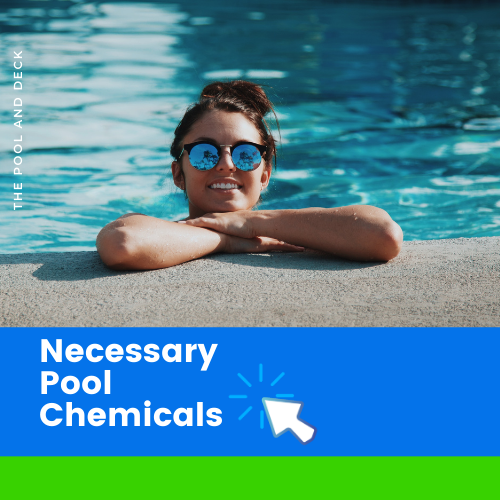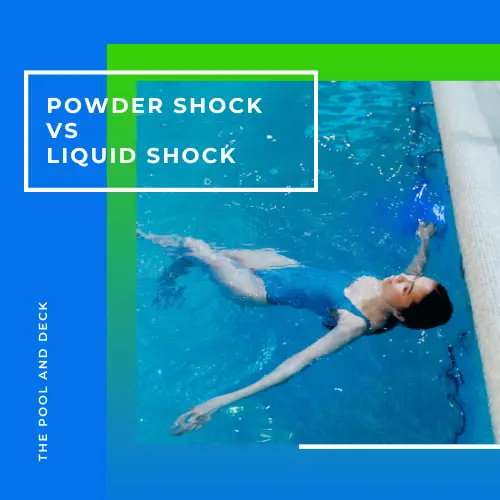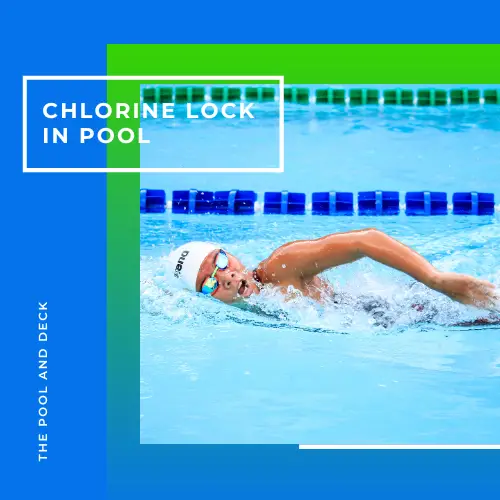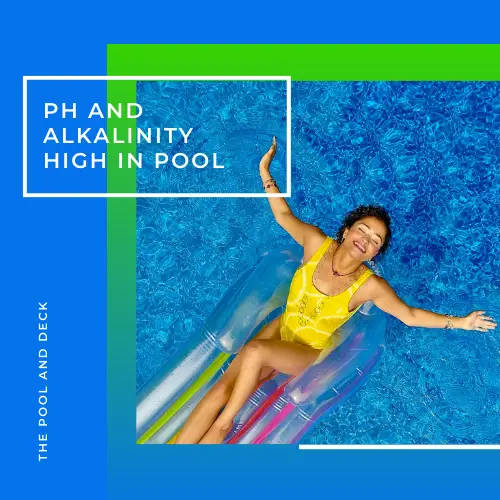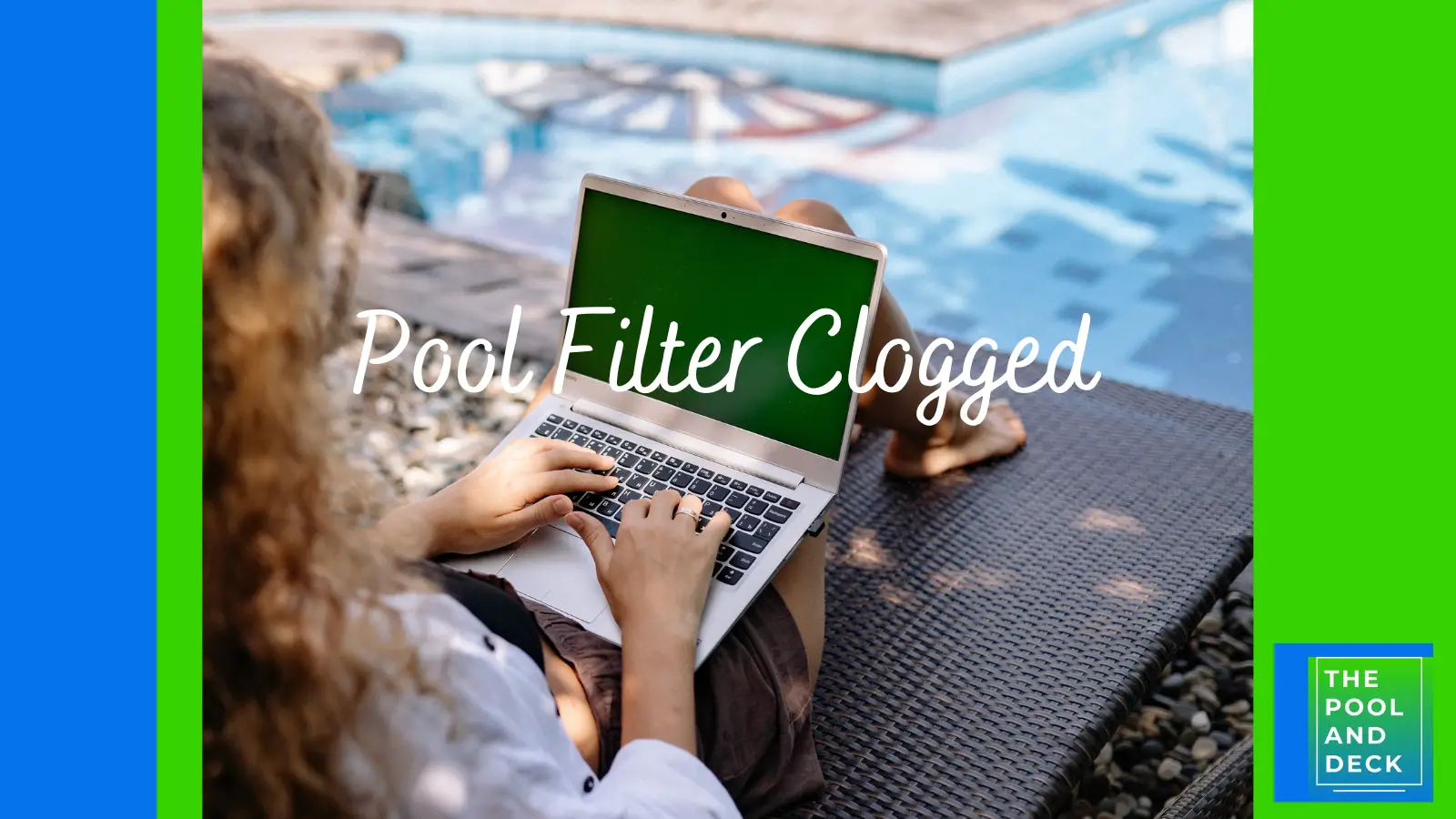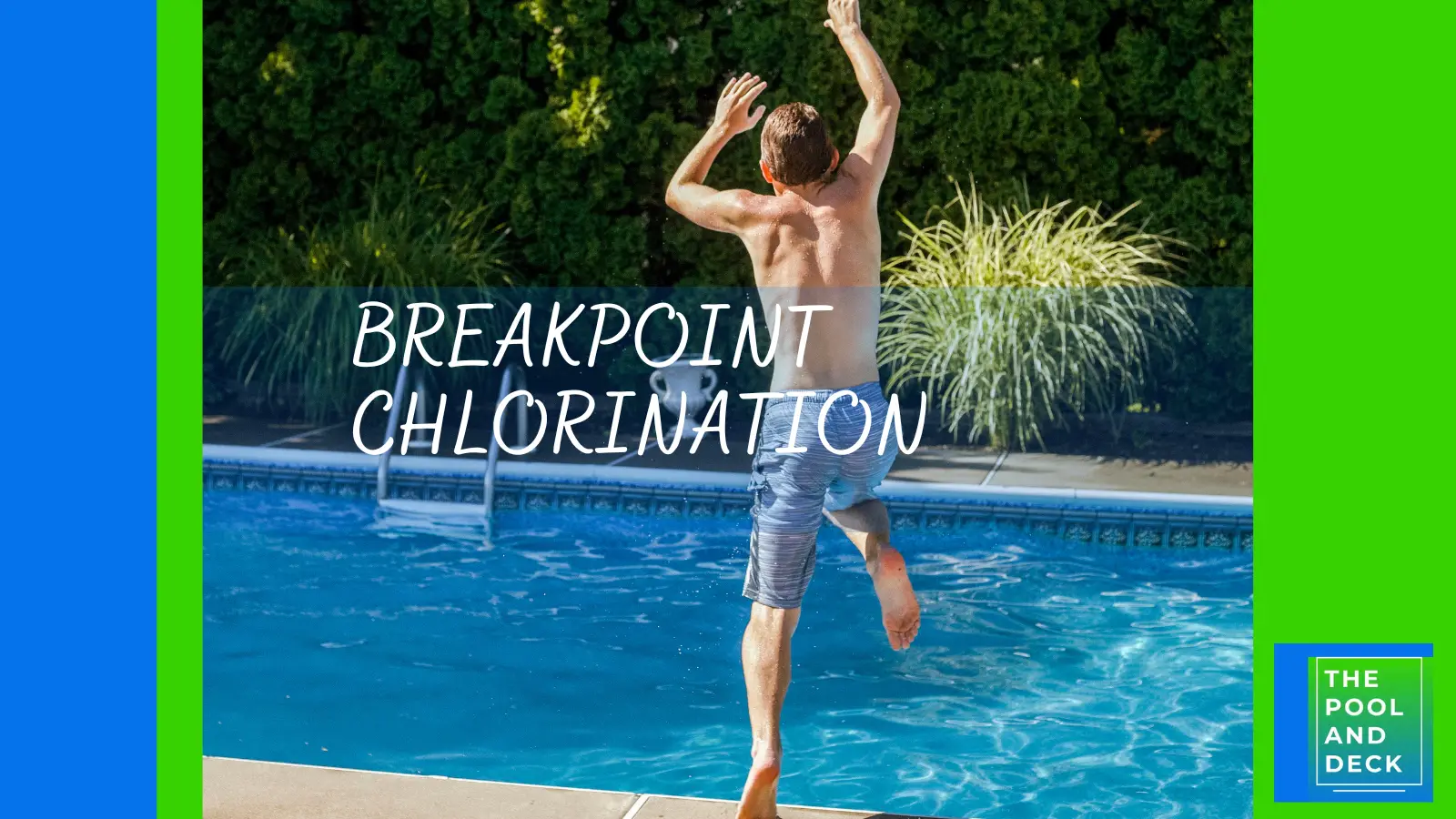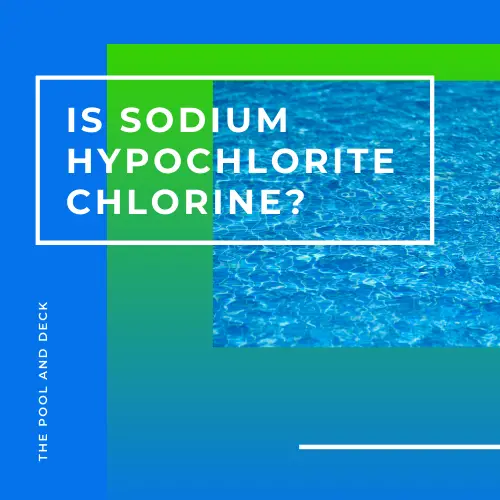How To Clear Green Pool Water Quick? (Best To Shock It!)
Your swimming pool is supposed to be crystal clear and blue. Don’t you hate it when the pool water turns green. A pool can turn green, in spite of all precautions. So, how to clear green pool water as quickly as possible?
A crystal clear blue pool can turn green, almost overnight, due to “algae bloom”. The best way to clear green pool water is to shock it with a very high dose of chlorine. This will have to be repeated till all the algae have been killed.
In this post I explain how pools turn green, the effect a green pool has on health of swimmers and how to clear green pool water.
thepoolanddeck.com is a participant in the Amazon Services LLC Associates Program, an affiliate advertising program designed to provide a means for sites to earn advertising fees by advertising and linking to Amazon.com . The website is also an affiliate of a few other brands. The affiliate links never increase your purchase price. We do appreciate your support. Thank you very much!
Table of Contents
What Turns a Swimming Pool Green?
Algae.
Algae are extremely small living organisms. Algae are not bacteria or from the animal kingdom. Algae are extremely small aquatic plants, capable of photosynthesis. This is the reason algae are green.
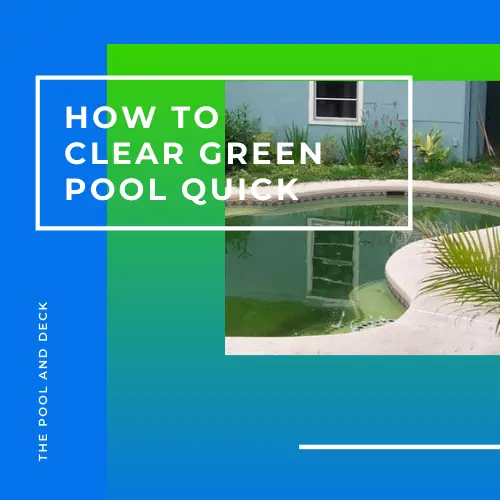
LIVESCIENCE defines algae as
Algae are a diverse group of aquatic organisms that have the ability to conduct photosynthesis.
LIVESCIENCE
Actually algae, especially some varieties such as seaweed and kelp, hold great promise as a sustainable food and fuel source in the future. Algae, being plants, convert carbon dioxide to oxygen.
On a global scale microalgae produce more than 75% of the oxygen required for animals and humans.
AlgaePARC
Algae can be a game changer in reversing global warming and providing food & fuel to the human race.
However, your swimming pool is not the place to grow algae. If they do, you need to clear green pool water fast.
What Causes an Algae Bloom in a Pool?
Algae reproduce using spores. Algae spores are in the atmosphere all the time. They move around with the wind currents. They can even enter your pool through contaminated swimsuits or pool cleaning equipment such as brushes.
Your backyard swimming pool usually has all the three things they need to flourish.
- Lots of water
- Plenty of sunshine
- Enough nutrients in the pool dirt
Actually a minute quantity of algae is present in a pool, even a very clean one, at all times. You don’t see it because the quantity is small. However, if pool conditions change favorably (for the algae) they can bloom, sometimes in a matter of hours.
Factors that can trigger an algae bloom in your pool are:
- Increase in dirt particles (nutrient for algae)
- Decline in chlorine levels in pool water
- Increase in pH level of pool water
- Poor pool water circulation
- Increase in number of swimmers
- Ineffective filtration
- Favorable pool water temperature
Click on the image below to reach the page with all the Necessary Pool Chemicals.
Is it Bad to Swim in a Green Pool?
Algae is good for the environment because it converts carbon dioxide to oxygen. Then why is it bad to swim in a green pool?
Actually algae, by themselves, are not harmful to human health. As mentioned before, every pool, even those with crystal clear blue water have minute quantities of algae.
However, it is bad to swim in a green pool because:
Algae Encourage Bacteria Growth
You regularly add chlorine to your pool water to kill bacteria and keep your pool safe for swimming. Of course you can not overdo it. Excessive exposure to chlorine is not good for you. It can result in eye irritation, rashes, coughing, nose or throat pain.
So you are putting the right dose of chlorine in your pool at regular intervals. But a sudden increase in algae level can deplete the chlorine level in the pool. Now the chlorine has got two enemies; algae & bacteria.
The remaining chlorine may not be enough and this encourages the bacteria to grow. Your pool is no longer safe to swim in.
You must clear the green pool water to ensure the chlorine can kill the bacteria and the pool safe to swim again.
Algae Reduces Visibility
A green pool is not a clean pool. Green pools are cloudy and murky. The result is lower visibility. Even with moderate algae growth, it is hard to see the bottom of your pool clearly.
A green cloudy pool is no longer inviting. It is not a pleasant site. No one wants to swim in a pool that looks gross & hideous. Not you, not your family and not your friends.
If you have a green pool, forget inviting friends over for BBQ on your pool deck. You can say goodbye to “fun” sundays and socializing.
A green pool with poor visibility can also be a bit dangerous. The risk of swimming and diving accidents increase. Rescue efforts will be more difficult to execute.
You must make sure to clear the green pool water before swimming in it, to reduce risk of accidents.
Algae Affects Pool Filter Performance & Cost
The presence of extraordinary amounts of algae in your pool will put an additional pressure on the pool filtration system. Algae commonly found in swimming pools are between 2-15 microns. Most of these will pass through sand or even cartridge filters.
However, algae can clump together and form strands. These can start clogging your pool filter faster than normal. As a result you will have to clean your filter more frequently. Else the filter will not be able to clear green pool water efficiently.
You also need to use a lot more pool chemicals when algae levels are high in your pool. You need a higher dose of algaecide to combat the algae.
You also need to increase the frequency of pool chemical dosing. Some pool chemicals are lost every time you backwash a sand or DE filter.
What is the Best Way to Clear Green Pool Water?
Actually there are several ways in which you can clear green pool water. The technique which may be best for you will depend on the amount of algae growth in your pool.
Traces of Algae Growth
The best way is to take action as soon as you notice even traces of algae. Nip it in the bud, as they say!
If you are brushing your pool regularly, then you might see some green stuff on the pool steps or on the pool bottom at the shallow end.
Vacuuming, just after brushing, will get most of the debris out. But not the algae. Algae is too small and the vacuum mesh can not catch it. You can, however, trap the algae by modifying the vacuum mesh.
The Cotton Ball Technique
Fill the vacuum mesh bag with cotton balls. As many as you can. Then pull the mesh bag right upto the vacuum exhaust pipe. The cotton balls will trap most of the algae along with the dirt and debris.
The Microfiber Mitt Technique
Instead of cotton balls you can use a reversed car cleaning microfiber mitt. Slide the reversed mitt over the vacuum mesh and secure it tightly over the exhaust pipe. The mitt will trap the algae.
Vacuum till you no longer see traces of algae. You may have to repeat the process a few times to totally clear the green pool water.
Algae Bloom in Your Pool
You need to SLAM your pool if it has turned green all over. In other words your pool is experiencing an “algae bloom”.
SLAM is an acronym for SHOCK, LEVEL AND MAINTAIN.
SLAM is quite a simple technique really, but the term coined by Trouble Free Pool (TFP) does have a “fast & furious” ring to it.
How to Shock your Pool
You can Shock your pool by adding a really heavy dose of pool chemicals, particularly chlorine. A heavy dose is 3-5 times the normal dose.
The normal levels of chlorine in a safe and healthy pool should be between 1-4 ppm. Algae bloom would certainly have depleted the chlorine level.
Before you start shocking to clear the green pool water, you must check the pH level. If the pH is higher than 7.8. then you should use muriatic acid to bring down the pH level. High pH levels reduce the efficacy of the chlorine.
You must also ensure that the CYA level of the pool is between 30-50 ppm. Too low and the UV rays from the sun will deplete the free chlorine in your pool. Too high and the chlorine will not be as effective in killing the algae.
To shock the pool you must add a heavy dose of liquid chlorine. With an algae bloom chances are that the free chlorine level in the pool is down to 0 ppm. Use the poolmath calculator from trouble free pool to determine the amount of liquid chlorine required to shock the pool.
The chlorine will start killing the algae, but it will not be able to kill all of them in one go. Shocking a green pool is not a one step process.
Check Chlorine Levels Continuously
You will need to keep checking the chlorine level and keep adding liquid chlorine to maintain the free chlorine at shock level. Initially you may have to check every couple of hours. Then as moore and more algae get killed, you will need to check less frequently.
Maintaining the pH level of the water between 7.2-7.5 during the shocking process is also very important. Higher pH levels reduce the efficacy of the chlorine.
As algae dies, the pool will start changing its color from green to a cloudy white-blue and finally crystal clear blue!
At this point you are almost there. However, you need to make sure. You can only conclude that you have been able to clear your green pool water completely and the pool is free of algae, if you are losing less than 1 ppm of chlorine overnight.
Circulation & Filtration
You add the high dose of liquid chlorine from the sides of the pool. However, you want the liquid chlorine to spread through out the pool as quickly as possible. Run your pump and pool filter continuously during the pool shock.
Dead algae in the pool are better than live algae in the pool. But dead algae are also food for the remaining live algae. So you need to get rid of the dead algae too.
The best way would be to use a DE filter. If your pool does not have one, try to borrow or rent one for a few days. Backwash the filter as often as necessary.
Should you be interested in buying a DE pool filter, you can check out Hayward W3DE6020 ProGrid Diatomaceous Earth Pool Filter available on Amazon. A range of sizes, to suit pools of different sizes are available.
Checklist of Things To Do
Meanwhile ensure that you are:
- Brushing your pool everyday
- Vacuuming the pool everyday
- Running the pool filter all the time
- Continuously testing pool water chemistry
- Replenishing other pool chemicals as required
- Maintaining the pH Level of pool water
- Bringing the pool water chemistry to prescribed level
Should a Green Pool be Drained?
It is very rare that you will need to drain a green pool. Draining a pool is not just time consuming and expensive. You run a real risk that the pool bottom will pop up. This can happen if the water table is high around an empty pool.
The rule of thumb is that, if you can see the bottom of the shallow end of the green pool, you can revive the pool with chemicals, hardwork and patience. SLAM will work.
If the pool has been neglected for a very long time then it may have a ton of debris, frogs and of course algae. In this situation, draining and cleaning the pool may be your only option. Think of it as a major refurbishment.
I would suggest calling in the professionals. It is back breaking work requiring expertise and experience. Chances are very high that you may also have to get significant repairs done to the pool lining, pump & filtration system, plumbing, deck etc.
For more information on Pool Chlorine Types refer to my post Complete Guide To Pool Chlorine Types. (What Is The Best?).
Thank you very much for reading the post. I do hope you found it informative and helpful.

